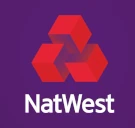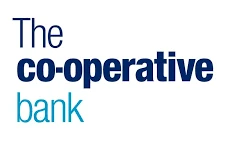1. The ultimate guide to youth bank accounts in the UK (2025)
In today's increasingly digital world, teaching children about money is more crucial than ever. The days of simply handing over pocket money in coins are evolving. A youth bank account serves as a vital first step on the ladder to financial literacy, providing a safe and controlled environment for children and teenagers to learn the fundamentals of earning, saving, and spending responsibly.
This comprehensive guide will walk you through everything you need to know about opening a bank account for a young person in the UK. We’ll explore the different types of accounts available for various age groups, compare the features, explain the safety nets that protect your child’s money, and provide a clear roadmap for choosing the best option for your family.
2. What exactly is a youth bank account?
A youth bank account is, at its core, a current account designed specifically for individuals under the age of 18. While they share many characteristics with standard adult accounts—such as having a sort code, account number, and often a debit card—they come with crucial modifications and limitations to create a secure learning environment.
These accounts are built on the principle of "learning with a safety net." They empower children to manage their own money from allowances, birthday gifts, or part-time jobs, but with built-in restrictions that prevent them from getting into debt. The most significant of these is the complete absence of an overdraft facility, a legal requirement for anyone under 18 in the UK.
Generally, the journey into youth banking is staggered by age, with different products and levels of autonomy becoming available as a child matures.
3. The journey to financial independence: accounts by age group
Banks recognise that a 7-year-old has very different needs and capabilities compared to a 17-year-old. Consequently, the market is segmented to provide age-appropriate tools for financial education.
Early starters (Ages 6-10): the world of prepaid cards
For younger children who aren't yet eligible for a traditional bank account, prepaid debit cards have become an incredibly popular first step. These aren't bank accounts in the conventional sense but serve a similar purpose.
How they work: A parent or guardian opens and controls a master account, typically through a smartphone app. You can then load money onto the child's associated prepaid card. The child can use this card to make purchases online and in-store, or withdraw cash from an ATM, just like a standard debit card.
The key difference is that they can only spend the money that has been explicitly loaded onto the card. If the balance is £10, they cannot spend £10.01. The transaction will simply be declined.
Key advantages of prepaid cards:
- Parental oversight: Apps linked to these cards offer granular control. Parents can often set spending limits, block certain types of retailers (e.g., gambling sites), receive real-time spending notifications, and instantly freeze the card if it’s lost.
- Early learning: They provide a tangible way to teach budgeting. A child can see their balance decrease with each purchase, connecting the concepts of spending and finite resources.
- Accessibility: Many providers offer accounts from the age of six, long before traditional banks will offer a current account.
Points to consider:
- Fees: Unlike most youth bank accounts, many prepaid card services charge a monthly or annual subscription fee.
- No FSCS protection: As these services are typically run by e-money institutions rather than banks, the money held is not protected by the Financial Services Compensation Scheme (FSCS). While the funds are usually held in a separate, ring-fenced account, this is a lower level of protection than a traditional bank offers.
- Limited functionality: You cannot set up direct debits or standing orders from a prepaid card.
The first step into banking (Ages 11-15): the children's current account
Once a child turns 11, the doors to the mainstream banking world swing open. Most major UK banks offer a dedicated current account for this age group. This is their first "real" bank account, held in their own name.
How they work: A parent or guardian must be present to open the account, either in a branch or by authorising it as part of an online application. While the account belongs to the child, the bank requires parental consent for key features, particularly the issuance of a debit card.
These accounts allow for bank transfers, setting up payments, and managing money through online banking or a mobile app. They provide a significant step up in functionality from prepaid cards, introducing children to the core mechanics of modern banking.
Nearing adulthood (Ages 16-17): the teen bank account
At 16, a young person gains significantly more financial autonomy. They are legally able to open a bank account by themselves, without the need for a parent or guardian to be present. The accounts offered to this age group are very similar to adult current accounts, providing a near-complete banking experience.
They can apply for a full debit card, manage their account entirely independently through sophisticated mobile banking apps, and use features like mobile payments (Apple Pay and Google Pay). This is the final stage of the "training wheels" period, allowing them to manage wages from a job and handle regular payments, like a mobile phone contract, before they turn 18.
However, the key safety feature remains: no overdraft is available until they become a legal adult.
4. Unpacking the features: what's included in a youth account?
While features vary between banks, most youth accounts offer a consistent set of tools designed for learning and convenience.
The debit card vs. the cash card
When opening an account for a child, you'll often have a choice between two types of cards:
- Cash card: This is the most basic option. It can only be used to withdraw money from an ATM. It cannot be used for purchases in shops or online. This is a good choice for parents who want to give their child access to their money but are not yet comfortable with them making independent purchases.
- Debit card: This offers full functionality. It can be used at ATMs, in-store for chip-and-PIN or contactless payments, and for online shopping. For children under 16, a parent will almost always have to give explicit permission for a debit card to be issued.
Embracing the digital age: online and mobile banking
Modern youth accounts come with access to online banking portals and dedicated mobile apps. These are often simplified, user-friendly versions of the adult apps, designed to be intuitive for young users. Through these apps, they can:
- Check their balance and view recent transactions.
- Transfer money to friends and family (with some potential restrictions for younger children).
- Set up savings goals or separate "pots" for different purposes.
- From 13 or older, they can often add their card to mobile wallets like Apple Pay and Google Pay for easy contactless payments with a smartphone.
Parental controls: how much oversight do you have?
The level of parental control varies significantly between different types of accounts.
- Prepaid cards (Ages 6+): Offer the most comprehensive controls. You can monitor all spending, set daily/weekly limits, and restrict where the card can be used.
- Challenger bank youth accounts (e.g., Starling Kite, Monzo for Under 16s): These accounts, often available from age six, operate similarly to prepaid cards. They are linked to a parent's account, giving you excellent oversight and control directly from your own banking app.
- High street bank accounts (Ages 11+): These offer less direct control. Once the account is open, it is legally the child's. Your control is primarily exercised at the setup stage—for example, by opting for a cash card instead of a debit card or choosing not to enable online access initially. You cannot typically view their transaction history or set dynamic spending limits after the account is active.
5. Head-to-head comparison: youth bank accounts vs. prepaid cards
Choosing between a full bank account and a prepaid card can be confusing. This table breaks down the key differences to help you decide which is right for your child's age and your family's needs.
| Feature | Youth bank account | Prepaid card service |
|---|---|---|
| Minimum age | Typically 11 (some challenger banks offer from 6) | Typically 6 |
| Account ownership | The account is legally in the child's name. | The account is managed by the parent; the child is a cardholder. |
| Monthly fees | Almost always free. | Often involves a monthly or annual subscription fee. |
| Key functions | Receive payments, withdraw cash, make purchases, set up direct debits/standing orders. | Load money, withdraw cash, make purchases. No direct debits. |
| Parental controls | Limited direct control with high street banks. More control with linked challenger bank accounts. | Extensive controls via a parent app (spending limits, retailer blocking, real-time alerts). |
| Financial protection | Deposits up to £85,000 are protected by the FSCS. | Not covered by FSCS. Funds are 'safeguarded' in a separate account. |
| Best for | Teenagers and children (11+) learning to manage wages or more complex finances. | Younger children (6-10) as a first introduction to digital money and for parents wanting maximum control. |
6. How to choose the perfect youth bank account: a parent's checklist
With a competitive market, it pays to shop around. Here are the key factors to consider when making your decision:
- Interest rates: While current account interest rates are generally low, some youth accounts offer preferential rates on balances up to a certain limit (e.g., 2% on the first £1,000). This can be a great way to introduce the concept of earning interest on savings.
- Fees and charges: The vast majority of youth bank accounts are free to maintain. However, always double-check for any hidden charges, particularly for using the debit card abroad if you travel as a family.
- Withdrawal and spending limits: Most accounts have a daily limit on ATM withdrawals and total spending. Compare these to ensure they are set at a sensible level for your child. Some accounts allow you to customise these limits.
- Quality of the mobile app: A good banking app is essential for engagement. Look for one that is easy to navigate, visually appealing, and includes helpful features like savings goals or spending categorisation to help your child understand where their money is going.
- Account opening process: Check what is required to open the account. Can you start the process online, or do you and your child need to visit a branch with documentation? If you are an existing customer at a bank, you may find the process significantly easier.
7. The practicalities: opening and managing the account
Step-by-step guide to opening an account
Opening a bank account for a minor is a straightforward but secure process.
- Check eligibility: Ensure your child meets the age requirements for the specific account you've chosen.
- Gather your documents: You will typically need to provide proof of identity and address for both yourself (the parent/guardian) and your child.
- For the child: A birth certificate or passport is usually required.
- For the parent/guardian: A driving licence or passport, plus a recent utility bill or bank statement for proof of address.
- Apply: For children under 16, a parent or guardian will need to lead the application. This can often be done online if you are an existing customer, but many banks still require you to visit a branch to finalise the process and verify identities in person. For those aged 16 or 17, they can typically complete the entire application themselves.
- Activation: Once the account is approved, you will receive the account details, and any cards or PINs will be sent separately in the post. You can then help your child set up their online and mobile banking access.
What happens when your child turns 18?
This is an important milestone. In most cases, a youth account will automatically transition into a standard adult current account on the holder's 18th birthday.
The bank will write to them in advance of this change to explain what will happen. All existing funds, direct debits, and standing orders will be carried over seamlessly.
The most significant change is that they will now become eligible for adult banking products, including an overdraft and other forms of credit. This does not happen automatically. They will have to apply for an overdraft if they want one, and the bank will assess their eligibility. This transition is a perfect opportunity to have a serious conversation with your young adult about responsible borrowing and the risks of debt.
8. The financial fine print: tax and security
Two common questions from parents revolve around the tax implications and safety of their child's money.
Understanding tax on children's savings: the £100 rule explained
Children have the same tax-free allowances as adults. In the 2025/26 tax year, this includes a Personal Allowance (£12,570), a Starting Rate for Savings (£5,000), and a Personal Savings Allowance (£1,000). This means a child would need to earn over £18,570 in interest and income before paying any tax, a scenario that is highly unlikely for most young people.
However, there is a specific rule for parents. If money gifted by a parent or step-parent generates more than £100 in interest in a single tax year, that entire amount of interest is taxed as if it were the parent's own income.
This rule is designed to prevent parents from using their children's tax-free allowances to avoid their own tax liabilities. The £100 limit does not apply to money gifted by grandparents, other relatives, or friends.
Is my child's money safe? a look at FSCS protection
Just like an adult account, any money held in a UK-registered bank or building society is protected by the Financial Services Compensation Scheme (FSCS). This scheme guarantees to protect savings up to £85,000 per person, per financial institution, if the bank were to fail. This protection applies regardless of the account holder's age, offering complete peace of mind that your child's pocket money and savings are secure.
9. Conclusion: investing in your child's financial future
Opening a youth bank account is far more than just finding a place to stash birthday money. It's a practical, powerful educational tool. It provides a managed environment where children can make small mistakes, learn from them, and build the confidence and skills they will need to navigate the complex financial world of adulthood.
By starting them early, you are giving them a foundational understanding of budgeting, the value of saving, and the responsibility that comes with financial independence. It is one of the most practical and enduring gifts you can give them.










